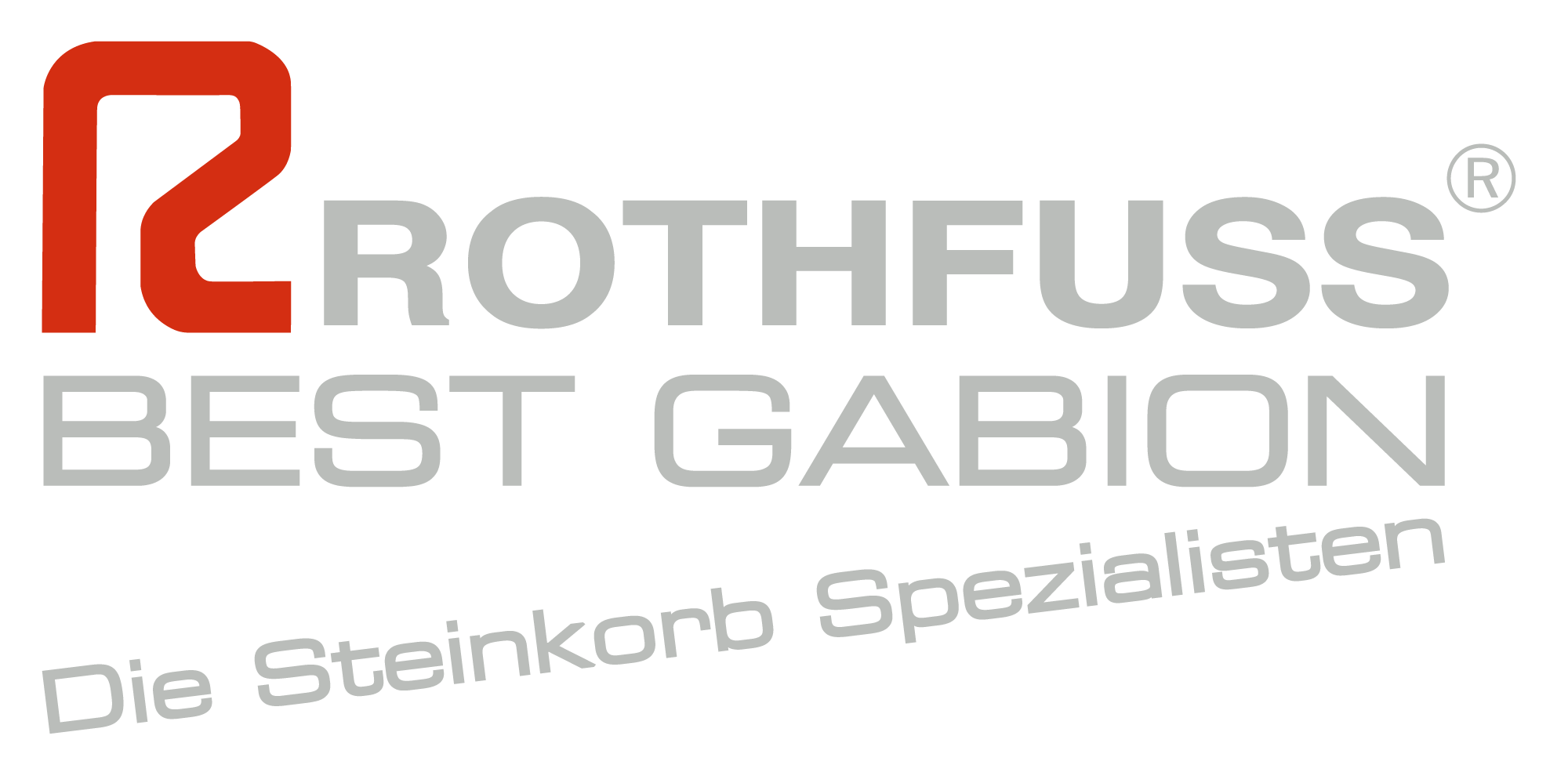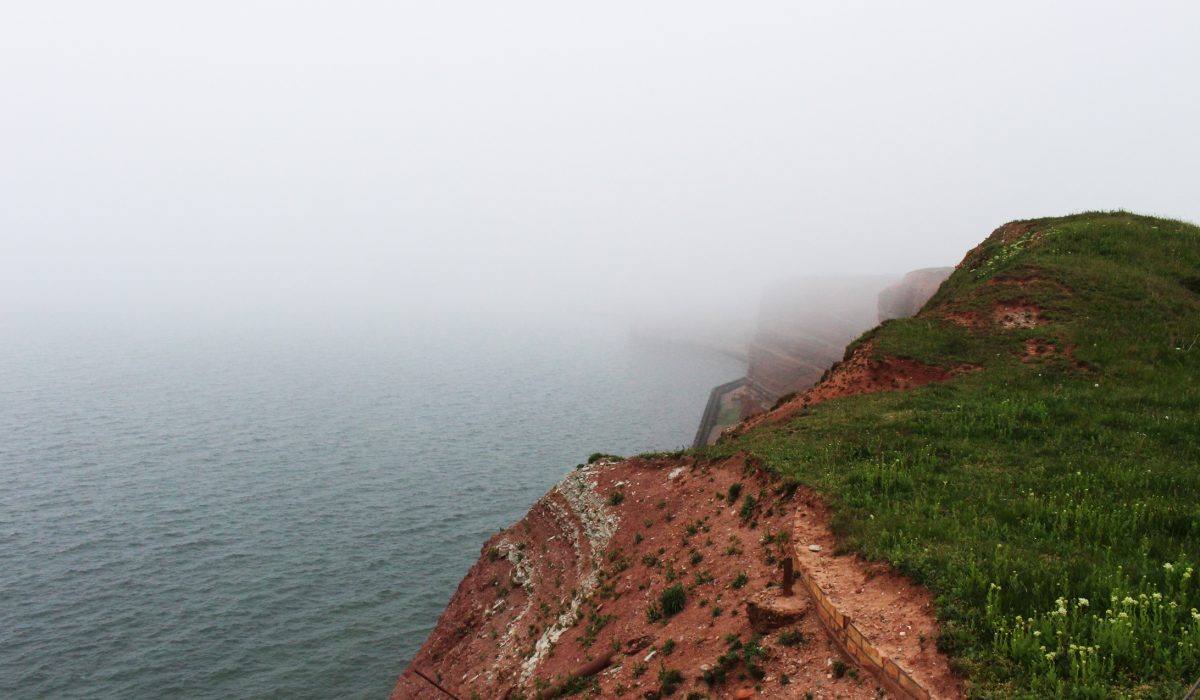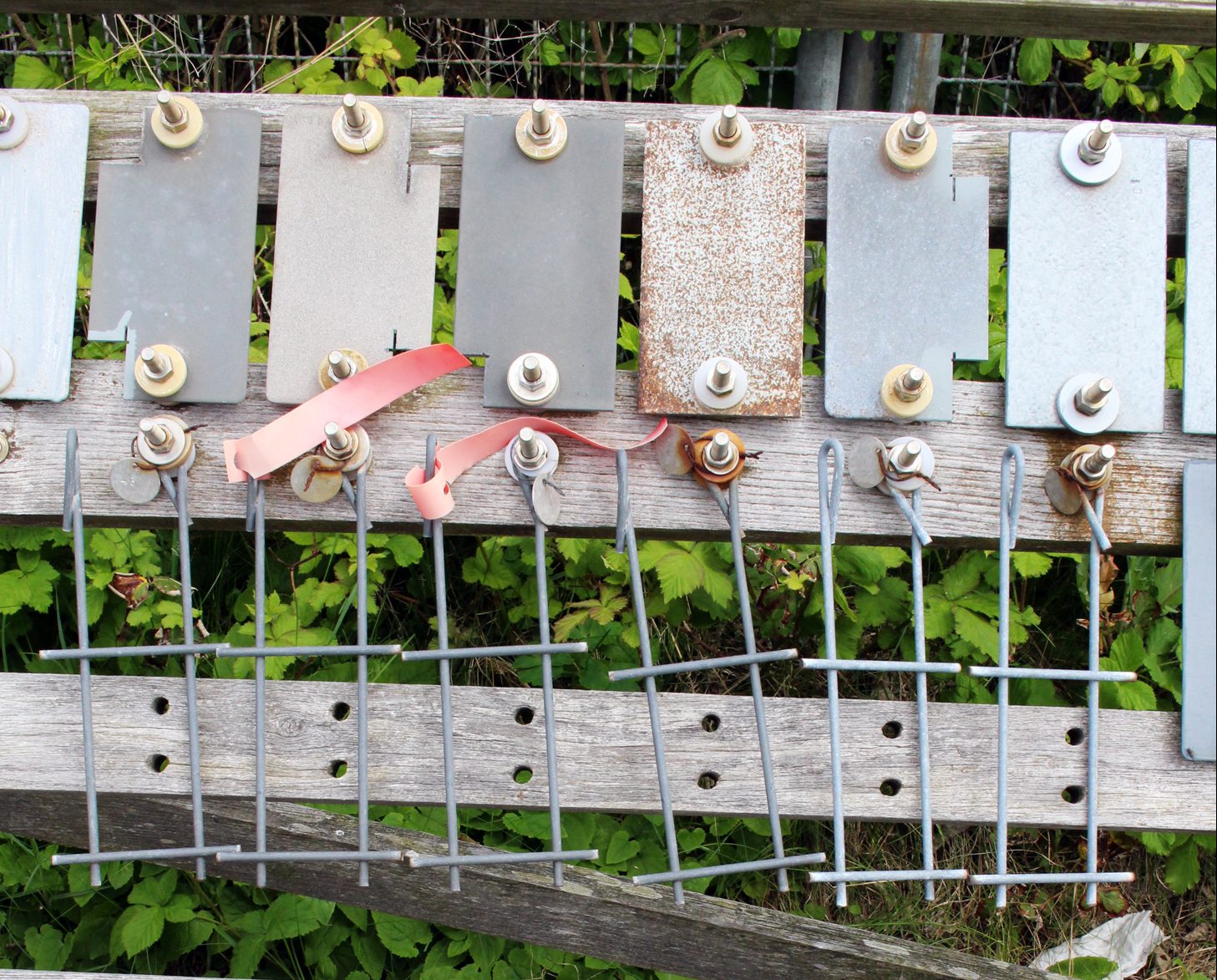In co-operation with the Material Testing Institute (MTI) in Stuttgart, we are installing spot-welded wire mesh samples on Helgoland for the project "Corrosion Tests in a Maritime Atmosphere" led by the Federal Institute for Materials Testing (FIMT). As a North Sea island with an exposed location, Heligoland offers optimal conditions for corrosion tests in a maritime atmosphere. Here, metallic materials are exposed to strong corrosion stress due to the high salt content of the ambient air.
The samples are exposed to an environment which can be described by the corrosivity category C4 to C5. (Coastal areas significantly impacted by chlorides) In order to permanently prove that our zinc aluminum (Zn 95% Al 5%) coated wire mesh mats are permanently resistant to this extreme atmospheric exposure, mesh samples were relocated in 2009.
The mesh samples are examined annually in a research campaign, and are taken to Stuttgart for laboratory tests upon request. Together with short-term tests in the laboratory, e.g. the salt spray test according to DIN EN ISO 9227, corrosion protection systems can be reliably assessed.
In the picture you can see Dr. M. Büteführ, Deputy Head of Corrosion, Corrosion Protection at MPA Stuttgart. She is our correspondent for the assessment and appraisal of the outsourced samples.
In the picture you can see Dr. M. Büteführ, Deputy Head of Corrosion, Corrosion Protection at MPA Stuttgart. She is our correspondent for the assessment and appraisal of the outsourced samples.
The samples are evidently in very good condition after 8 years of ageing. No rust is visible. In the case of the atmospheric exposure to air with a high saline content, the zinc aluminum coating clearly represents an economic alternative to stainless steel. The corrosion protection of zinc-aluminum under normal environmental conditions has already been proven and implemented for decades. If you look at the Gabions by Rothfuss Best Gabion in your area, you will find this to be confirmed.
For us, it is commonsensical that new products are also subject to this complex procedure. Four low-impact monotecR® mesh samples with Zn 95% / Al 5% coating were repositioned in 2017.
In addition to the research on Heligoland, we are conducting another long-term study in co-operation with MPA Stuttgart. Construction projects which were built between 1989 and 1996 are specified in an investigation programme and have already been tested several times.
The Gabion wall shown in the adjacent pictures was created with monotec gabions in 1989 and continues to fulfill its support function. 28 Years later, these mesh mats show no impairments to their corrosion protection features.
The investigation programme also examines construction projects in which the wire grids have been installed in an area of fluctuating water levels or directly on heavily used main roads and motorways. This year we are continuing research on selected projects.
This means we are doing our part to ensure that our gabion structures are scientifically supported and evaluated. As a customer, you can rest assured, that continuing to use Rothfuss Best Gabion's gabions will result in lasting and first class buildings.










